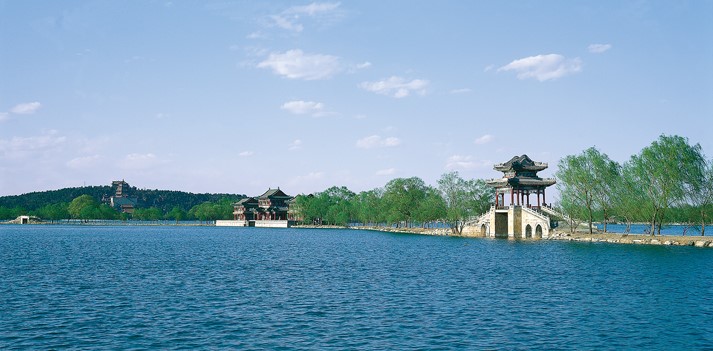
The West Causeway is modeled on the Su Causeway of the West Lake in Hangzhou. From north to south, the causeway is connected by six bridges, each unique in style: the Lake-Dividing Bridge, the Bridge of Pastoral Poems, the Jade Belt Bridge, the Mirror Bridge, the Silk Bridge and the Willow Bridge. Between the Silk Bridge and the Willow Bridge is the Pavilion of Bright Scenery. It was named after the essay, On the Yueyang Tower, a famous piece by Fan Zhongyan, a well-known writer of the Song Dynasty. He wrote, “the spring is peaceful and the scenery bright; the waves are asleep”. Peach and willow trees were planted on the causeway so that when spring came, the green of the willow trees and the red of the peach blossoms would combine to recreate the scenery of south China.

Yudai Qiao (Jade Belt Bridge)
Built during Emperor Qianlong’s reign (1736-1795), this high and thin bridge was named Jade Belt Bridge because its body and railings are made of gray white or white marbles which combine to resemble a jade belt. Under the bridge, the Kunming Lake inlet led to Yu River. When the emperors and empresses went by boat from the Garden of Clear Ripples to Jade Spring Hills, they would pass under this bridge.
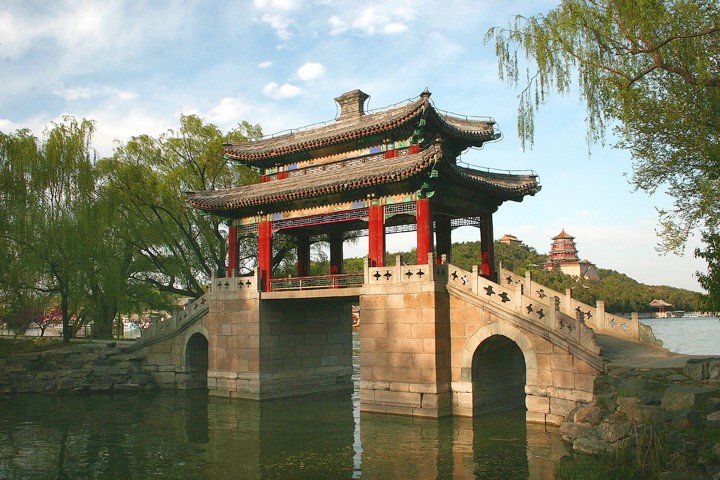
Binfeng Qiao (Bridge of Pastoral Poems)
This bridge was originally named the Mulberry and Ramie Bridge while the Summer Palace was still the Garden of Clear Ripples. As the Chinese pronunciation of this name sounds similar to the name of Emperor Xianfeng, the bridge’s name had to be changed to avoid an Imperial Court taboo.
The present name was borrowed from the title of an old folksong from the Book of Poems, the first songbook in China. The folksong depicted the agricultural life of peasants in ancient China and was entitled “The Pastoral Poem”. Both names were supposed to demonstrate the great attention that emperors paid to agriculture.
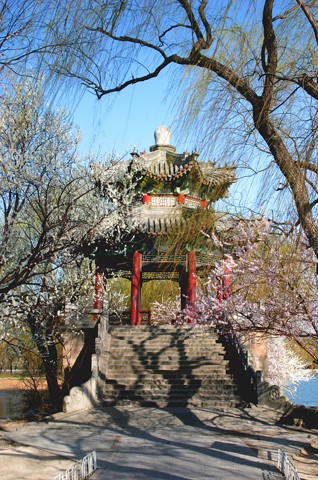
Jing Qiao (Mirror Bridge)
Originally built under Emperor Qianlong’s reign (1736-1795) and rebuilt during Emperor Guangxu’s reign (1875-1908), this bridge got its name from a line in a poem by Li Bai (701-762), a great poet of the Tang Dynasty, who wrote: “A bright mirror between two waters, a rainbow falls over the two bridges”.
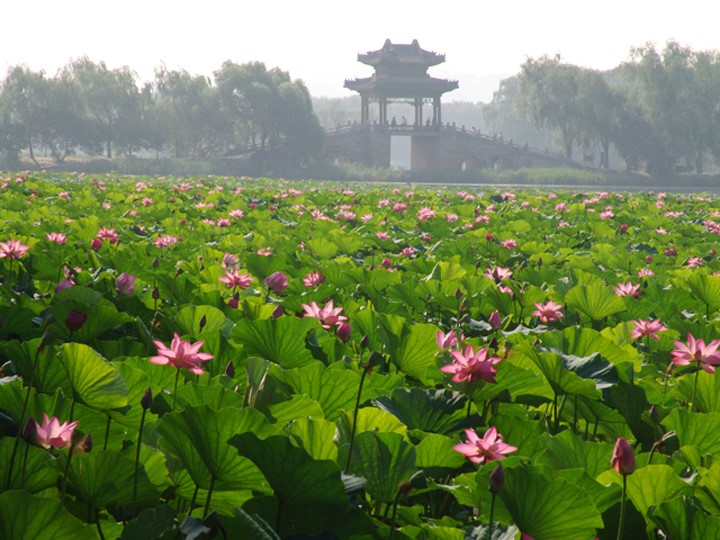
Liu Qiao (Willow Bridge)
Originally built under Emperor Qianlong’s reign (1736-1795) and rebuilt during Emperor Guangxu’s reign (1875-1908), this bridge got its name from a line in a poem, “the day is fine and there comes the willow catkins at the Willow Bridge.”
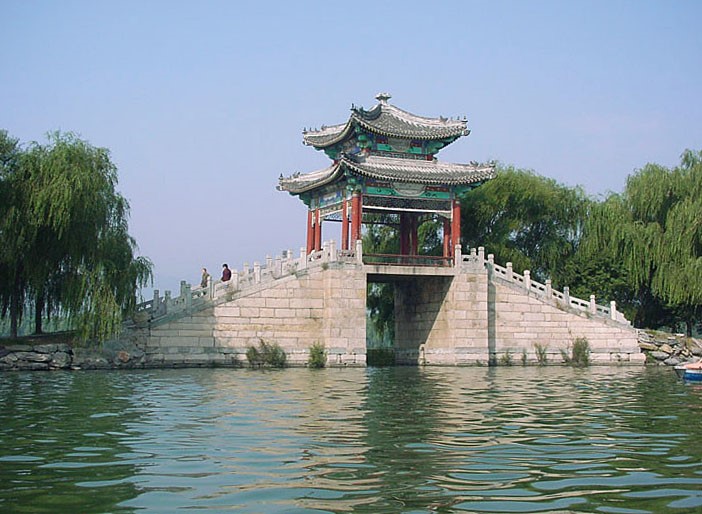
Lian Qiao (Silk Bridge)
Originally built during Emperor Qianlong’s reign (1736-1795), this bridge was rebuilt under Emperor Guangxu. A four-sided pavilion with double eaves was built on the bridge to facilitate sightseeing and provide a resting place.
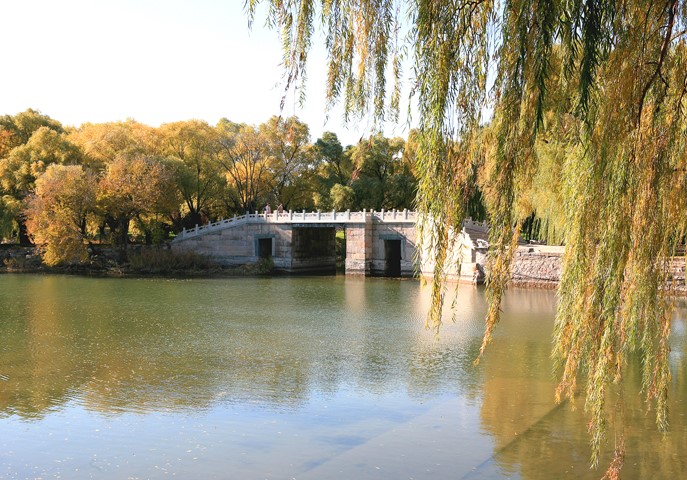
Jiehu Qiao (Lake-Dividing Bridge)
Originally built during Emperor Qianlong’s reign (1736-1795), this bridge used to have on it a pavilion, which was destroyed in the 1860 fire set by the Anglo-French Allied Forces. Its position, dividing the inner lake from the outer lake, gave the bridge its name.